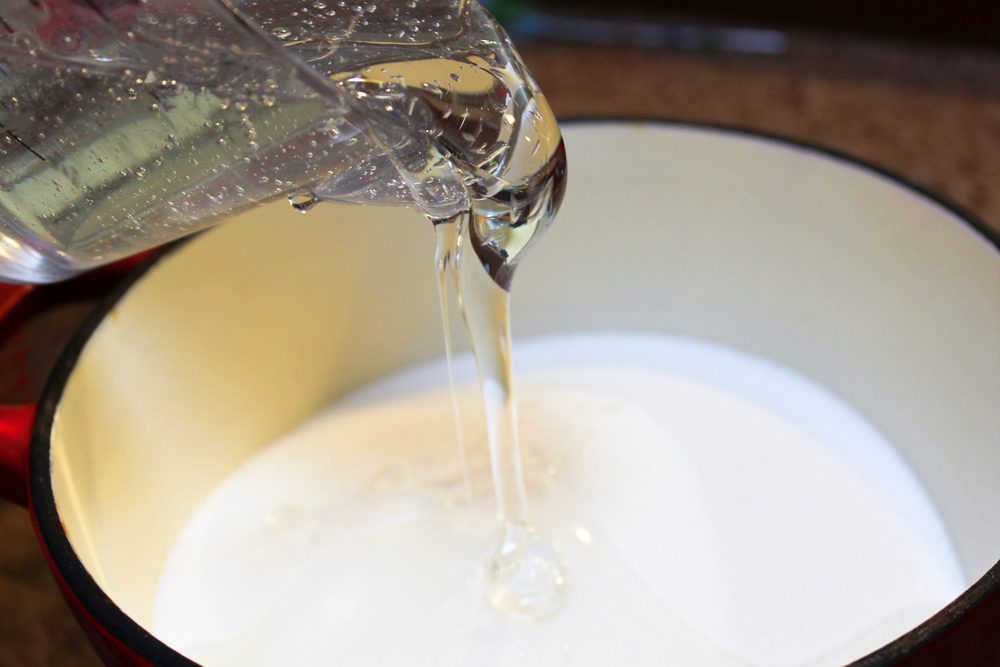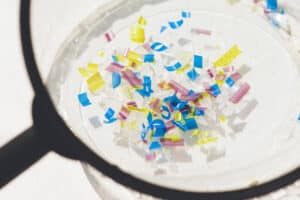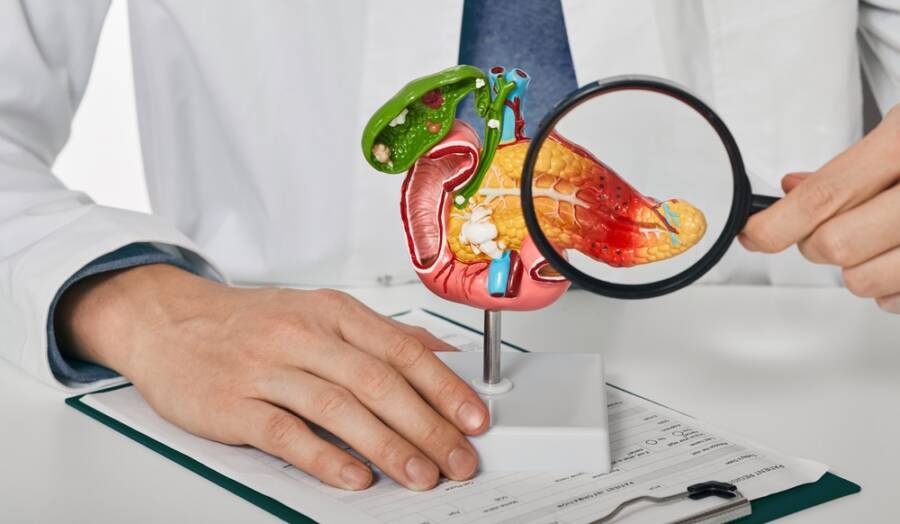Have you truly paid attention to the food you have been consuming in the last few years?
Over the past few decades, our industry has evolved impressively – especially when we think about food. Not only are the foods we eat entirely different from our ancestors, but they also contain plenty of new ingredients food manufacturers love to play around with.
Unfortunately, most of those new ingredients can cause serious damage to our health. You’ve probably heard the term ‘food additive’ many times before, but how many of us really know how it works or what it does?
Well, you may think of these substances, and food chemicals in general, as the holy grail of the food industry. Not only are they incredibly affordable to make, but they also transform any food in a matter of seconds.
Now manufacturers can change the food color, and texture and even extend its normal expiration date. This means that we have to become smarter again, so we can spot the unhealthiest ingredients and replace them with better alternatives. Today, we’ll discuss 11 of the most dangerous food additives you should avoid at all costs!

Partially hydrogenated vegetable oil
Definition: This fancy name represents an artificial type of fat created by forcing hydrogen gas into vegetable fats. The process leads to trans fatty acids, aka the most dangerous type of fat out there.
Food manufacturers commonly use this additive because it’s very affordable and keeps the food fresh for much longer. However, trans fats are notorious for increasing your risk of heart disease and clogged arteries – two conditions that further affect major brain functions as well as the reproductive system. What’s worse, the FDA still allows manufacturers to add up to 0.50 grams/serving of this food additive without even mentioning it on the label.
Found in: pastry products, frozen meals, cookies, ready-made soups, margarine
Yellow #5 and Yellow #6
Definition: These are in the top 3 most commonly used food colorings you’ll find in virtually every major food category in supermarkets. They’re easy to use and magically make foods look more appealing, so manufacturers are definitely happy.
As the consumer, you won’t be so happy when you’ll know that both colorings increase the risk of focus disorders such as ADD in children. Yellow #5 can also cause allergic reactions such as hives in a small percentage of the population, but almost nobody knows this.
Further animal studies confirmed that these food additives can increase the risks of intestinal and kidney tumors significantly. This information convinced some EU countries to ban the use of Yellow #5 and Yellow #6, but the FDA is still allowing manufacturers to use them freely in our country. Beware!
Found in: pudding, chips, cookies, cereal, bread mix, condiments
Sodium phosphate
Definition: This additive is made by combining phosphate and sodium; it’s mainly used to preserve the food texture so it stays tender and moist for longer.
Sure, we have to admit that phosphate is great for our health and we need it to complete our daily nutritional needs. However, consuming artificial phosphate excessively can seriously increase your risk of heart disease; specialists have also recently warned that this food additive can lead to a higher risk of shortened lifespan, kidney disease, and even weak bones.
Found in: sausage, processed meats (such as deli meat), hams, canned fish, and some ready-made meals

Evaporated cane juice
Definition: Another fancy name on our list stands for an artificial sweetener originated from sugar cane (the main plant used for all refined sugars out there). You may find this ingredient listed as cane sugar, cane juice, or crystallized cane juice.
Food manufacturers argue that this type of sweetener is much healthier than its more refined varieties. However, the nutritional differences are so small you might as well want to skip this one if you want to adopt a clean diet. Evaporated cane juice can increase your risk of obesity just as much as regular sugar – and with obesity come heart disease, bad cholesterol, and an increased risk of type 2 diabetes too.
Found in: soy milk, cereal, yogurt, chicken sausages, granola
Brominated vegetable oil
Definition: Now back to vegetable oils. Surprisingly enough, this beverage emulsifier is also used as a flame retardant for rocket fuels. When it comes to our health, though, it’s not as helpful.
Brominated vegetable oil can have a negative impact on your thyroid hormones while increasing inflammation – a symptom often linked to obesity and cancer. When you ingest too much BVO, your body definitely rings the alarm through fatigue, headaches, muscle pain, and even coordination. Overall, it’s just not worth the risk – not to mention that most foods that contain BVO also include other unhealthy ingredients like refined sugar.
Found in: sports drinks, citrus-flavored soda
Monosodium glutamate
Definition: This type of salt comes from an amino acid called glutamic acid; it’s mainly used to enhance the flavor and texture of canned or pre-packaged foods.
Multiple studies performed on mice proved that this additive can damage brain cells in the long run; however, the FDA dismissed the study claiming that there’s no such effect on humans. Interestingly enough, though, the FDA is also receiving tens of complaints for muscle weakness, headaches, and nausea caused by foods that contain this ingredient.
Additionally, monosodium glutamate is proven to affect the production of a hormone responsible for satiety – namely the one that lets you know you’re full. As a result, you’ll end up eating more than you should and gain extra pounds in no time.
Found in: canned soups, chips, foods with beef or chicken flavors

High-fructose corn syrup
Definition: This is one of the cheapest sweeteners derived from corn; it also stands for almost 40% of all the caloric sweeteners on grocery store shelves.
Clearly, manufacturers love using this ingredient, but is it good for us too? Short answer, no.
Long answer, the average American is consuming more than 200 of their daily calorie intake as high-fructose corn syrup; that’s a lot. Unfortunately, multiple studies have confirmed that consuming this additive excessively for just two weeks can increase your risk of bad cholesterol and cardiovascular disease. While we must admit that this isn’t the most dangerous artificial ingredient we’re eating nowadays, it’s still best to avoid it as much as you can.
Found in: almost every food out there from ice cream and cereal to yogurt, bread, canned fruit, sauces, and more than two-thirds of sweetened beverages of any kind
If you want to make sure that you are sweetening your coffee or tea with something that is still healthy for you, make sure to check out manuka honey, and if you are vegan, agave syrup is just as perfect!
Aspartame
Definition: Recently I’ve noticed more and more people and specialists discuss the impact of aspartame on our health – and I’m happy they do. Why?
Well, because the Dietary Guidelines Advisory Committee has recently granted food manufacturers the to use aspartame ‘in moderation.’ The problem is that the FDA has been receiving dozens of complaints every year with symptoms such as dizziness, headaches, and memory loss. Some studies have linked these neurological symptoms to excessive consumption of aspartame, yet the food industry is still using them freely.
Yes, we may not know for sure how harmful this additive is, but why is risk consuming it?
Found in: diet soda, tabletop sweeteners, yogurts, and other +6000 grocery store items
Sodium nitrite & sodium nitrate
Definition: These two preservatives are mainly used in meat products due to their ability to preserve that nice pink color. They’re also great at preventing bacterial growth, which means that meat will stay fresh for longer.
The only problem is that any food rich in these additives that are exposed to high heat (aka cooking) creates a reaction that forms nitrosamines. These guys are basically notorious for increasing your cancer risks tremendously. According to food manufacturers, this chemical reaction is hindered by adding erythorbic acid or ascorbic acid – but in the end, this just meant we end up ingesting more artificial substances than our body needs, right?
Found in: sausage, bacon, hot dogs, pre-packaged meats
Blue #1 and Blue #2
Now back to food colorings: these two synthetic dyes are used in a wide range of color combinations to make foods more appealing – and it works.
I mean, who doesn’t like that purple ice cream on the supermarket shelves?
Unfortunately, though, both of these dyes have been linked to cancer in animal studies. The Center for Science in the Public Interest has even gone so far as to issue a warning against them, which is a pretty big deal. Luckily for us, both additives can be easily avoided; for example, if you’ve been consuming those rainbow-colored cereals for breakfast until now, just replace them with a simple, healthier alternative. It might not be as amazing looking, but it’s definitely healthier and that’s what matters most!
Found in: almost every packaged blue, green, and purple food like cereals, candy icing, ice cream, or beverages
Have you ever experienced unpleasant side effects after eating processed foods (like fast food, deli meats, or frozen meals)? If so, share your experiences in the comment section, and let’s help each other stay safe from the harmful culinary inventions of today’s industry!
While you are at it, read more about all the lies we have been spoonfed by the food industry in the last few years so you can truly start having a healthy diet!













